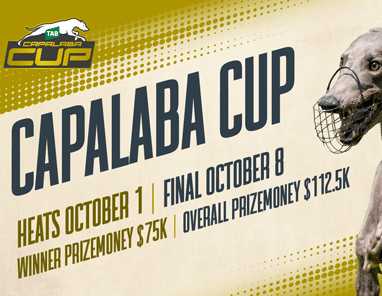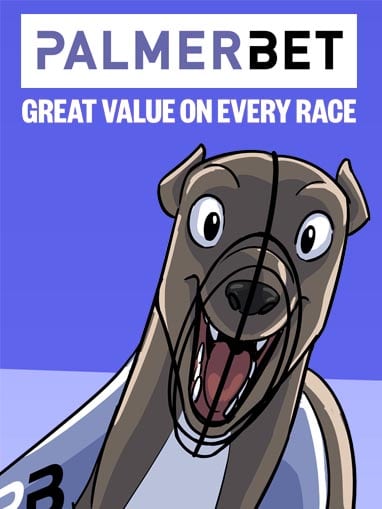
(LEADING NSW trainer Sid Swain says it is so important for trainers to get to know the physical limitations of their dogs.
A doyen of the sport for more than 50 years, Swain, who is based at Clarence in the Blue Mountains near Lithgow, says it’s not hard to work out ‘why a greyhound trains off due to the stresses of racing and the wear and tear on the body’.
He has trained many top-class chasers over the years, including multi-Group winner Cyrus The Virus, and over the years has had some close connections with Queensland racing.
Swain has some strong thoughts about getting the best out of a dog.)
By Sid Swain
In 2003 when Cyrus The Virus went through the Golden Easter Egg series undefeated after finishing fifth in the Australian Cup final 35 days earlier, legendary trainer Jimmy Coleman came charging into the wash down bay and said, ‘I told them all Swainy that he would win it – he was dead-set set for it’.
For me that was an absolute complement coming from a genius trainer who could get a dog right on a given night.
I started training in the early 1970s and during those days I spent a lot of time talking with legendary vet Ron Bowen.
Ron wrote articles on the kidney and liver functions in racing greyhounds and how over-training causes elevated liver enzymes and how a good training program can significantly reduce the amount of fat stored in liver cells that can block proper filtering.
He also formulated his own kidney and liver tablets and they are still available today.
Later on I became good friends with the late Phil Davis – a university lecturer and the Richmond track vet for many years. I loved talking with Phil about the occurrences that take place in the body during aerobic and anaerobic exercise – he was so knowledgeable.
And when I think about the conversations I used to have with Ron and Phil, it’s not hard to work out how a greyhound trains off due to the stresses of racing and the wear and tear on the body. Their energy levels rise and fall – they are not robots.
I can’t tell anyone how they should train their greyhounds – everyone has their own methods. But occurrences take place that cause a greyhound to lose form.
I like to start training a greyhound at around 14 months of age and the first six months of the preparation are very important for me.
My aim is to start racing my dogs around 19 to 20 months of age over 500m.
I know there are plenty of unforeseen circumstances that can interfere with the preparation but I’m not too paranoid about soreness. I trust my own judgement and the stopwatch and, unless it’s a serious injury, I seem to get through it all right.
I break in my own dogs because I like to incorporate that into my program and although I don’t want to go into the whole physiology of fitness, I have always been interested in the occurrences that take place during anaerobic and aerobic exercise.
(Anaerobic is a sudden, short, intense exercise regime to provide strength, speed and power, while aerobic exercise is a sustained activity such as walking and swimming.)
I have a 220m straight track and that works perfectly for my way of training, using the anaerobic method.
I slip the dogs up behind my car, take them back slowly and then slip them again. I do this about four times a week together with 20 minutes on the walking machine.
I gradually increase the distance of their track trials from 200m up to 500m over the six months with small regenerated periods of rest with no high intensity exercise for two weeks – just the walker.
The anaerobic system of training is capable of responding immediately to the energy demands of exercise and is able to support extremely high muscle force application and power output.
Unfortunately this system is limited in its capacity to a level that can be met by the aerobic energy system that responds surprisingly quickly to the demands of intense exercise.
Yet due to a relatively low rate of ATP turnover, it is incapable of meeting energy demands at the ‘beginning’ of exercise irrespective of the exercise intensity.
(ATP – adenosine triphosphate – is the source of energy that is used to power the movement of contraction in working muscles.)
It is evident that the aerobic system plays a significant role in determining performance during high intensity exercise with a maximal exercise effort over ‘longer distances’ deriving equal energy from both the anaerobic and aerobic energy systems.
And due to high intensity exercise and racing there is always some degree of muscle tissue damage.
The accumulation of by-products (substrates) are normally filtered through the liver and excreted out through the urinary tract over a period of time.
However, due to the heavy workload, these by-products begin to accumulate in the muscle tissues. Calcium is the common denominator in muscle contraction. (Google: The Sliding Filament Theory – it explains the reaction that takes place.)
The by-products interfere with this process causing a loss of power output from muscle contraction. It’s called metabolites fatigue.
The greyhound loses form seemingly for no reason. The treatment: Three weeks off from the heavy racing schedule, a change of diet, a freshen up.
FOOTNOTE: Swain’s thoughts on stayers backing up after seven days can be seen in next month’s issue of Chase. Also he suggests trainers wanting to better understanding a dog’s performance – go to Google: mitochondial biogenesis.









